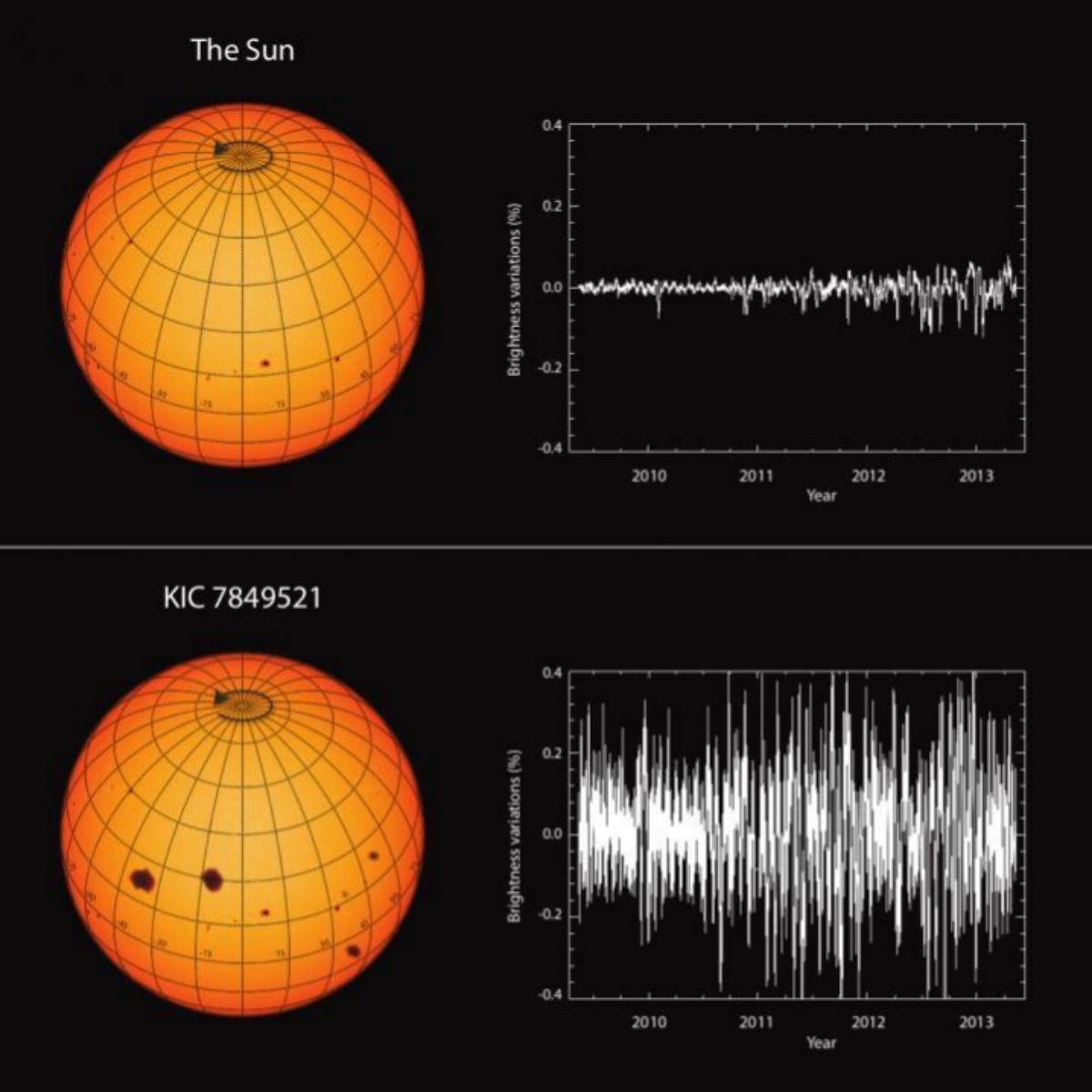- Astronomy. 30 birthday of Hubble: the telescope that changed our view of the cosmos
- Chronicles of the Cosmos - The mystery of extragalactic radio bursts grows
A study of hundreds of the Sun's twin stars has just shown that ours is a particularly quiet star, an important behavior for life to have thrived on Earth.
Flares and spots
Violent explosions take place in the photosphere of the Sun, which, by releasing magnetic energy in just a few minutes, heat the plasma to tens of millions of degrees and accelerate particles at extremely high speeds. Such flares are the origin of coronal mass ejections caused by geomagnetic storms, a serious danger not only for spacecraft and astronauts, but for all radio communication equipment and many other technology on the ground. When energetic particles from a solar flare reach Earth, spectacular northern and southern auroras are created .
This solar activity, which follows a periodic pattern of 11 years, is easy to measure thanks to the number of sunspots that have been recorded for about 400 years (since the telescope was invented). To go back further in time, one can resort to the study of tree rings and glacier ice. Thanks to all this, the solar activity has been able to be rebuilt over the last 9,000 years.
Naturally, flares and coronal mass ejections not only occur on the Sun, but can be observed on a large number of stars , including solar-type stars.
The Sun and its sisters
Is the Sun's activity similar to that of stars in your class? To answer this question, Timo Reinhold (from the Max Planck Solar System Research Institute) and his research team examined tens of thousands of stars, observed with the Gaia and Kepler space telescopes , to choose those with the same characteristics as our Sun: same surface temperature and gravity, same metallicity and same age. They thus found some 3,000 stars that were classified into two groups. Group 1 contained 369 stars whose rotation period is between 20 and 30 days , that is, very similar to that of the Sun, which is 24.5 days. Group 2 contained 2,569 stars with no known rotation period , perhaps some of these stars rotate in a similar way to the Sun, but the data did not allow their rotation speeds to be calculated.
As detailed in their article, published in the prestigious magazine Science , Reinhold and his group examined the activity level of these groups of stars and compared it to that of the Sun. They thus found that the stars in Group 1 had much less activity than solar , while those in Group 2 presented an activity much more similar to that of the Sun.
First conclusion: it seems that there must be some important difference between the two groups of stars, but at the moment there is no way of knowing what this difference is.
Second conclusion: the Sun is a much less active star than its Group 1 sisters . Compared to its equal stars, the Sun is very rare. Or at least that's how it has been during the period of the last 9000 years in which we have evidence of solar activity. Recall, however, that these 90 centuries are very little compared to the age of the Sun, which is about 4.6 billion years old.
Although the solar activity is variable, its absolute luminosity varies very little between the times when the activity is maximum or minimum. For example, between the minimum activity in 2007 and the maximum that took place in 2013, solar luminosity only fluctuated by 0.07%. However, the Sun's twin stars (those in Group 1) show variations that are five times greater on average.
It is impossible to say for now if the Sun has been this calm throughout his life. Perhaps in earlier stages it was totally similar to its twin stars and is now going through a period of particular calm. Or perhaps it has always been so. Be that as it may, it is a real luck that the Sun behaves in such a seldom calm manner. As we said at the beginning, solar flares and ejections are still violent enough to put our spaceships and high-tech equipment on the ground at risk.
If the Sun had been like most of its twin stars, perhaps it would have prevented the emergence and development of life on Earth as we know it today.
Furthermore, if the Sun were to emerge from this period of calm in the future, and begin to show the hyperactivity of its sisters, a behavior for which we have no reason to consider impossible, it would pose a very high risk to humanity. Fortunately, at the moment, there is no reason to foresee anything of the sort. During the last decade, the Sun has been behaving even more particularly inactive than was usual for it. It is a laziness that suits us a lot, at the moment we have a very good star.
Rafael Bachiller is director of the National Astronomical Observatory (National Geographic Institute) and academic of the Royal Academy of Doctors of Spain .
In accordance with the criteria of The Trust Project
Know more- science
- Science and health
Archeology The story of three slaves in colonial Mexico told by their bones
Climate crisis Melting ice in Greenland and Antarctica has increased sea level by 1.4 centimeters since 2003
Award Two pioneers in uniting the brain to culture

